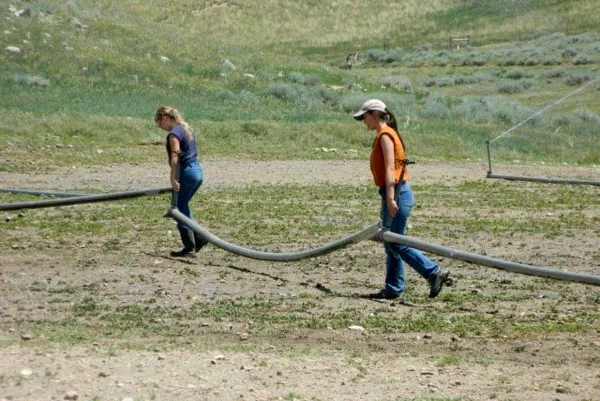Are news media finally fed up with UCP drug war propaganda?
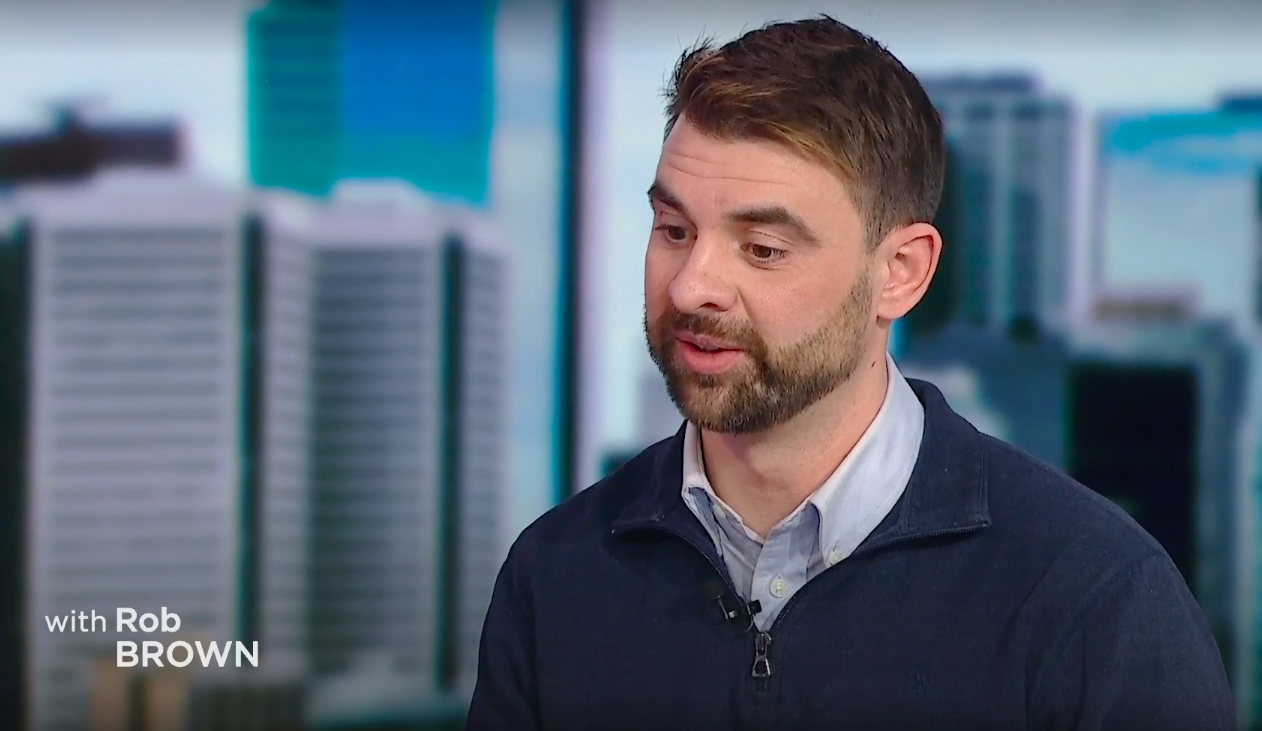
The Alberta government is scrambling to glue together its narrative that overdose deaths can be solved through a limited scope of privatized rehab.
But a live interview on CBC Calgary pulled the curtain on the strategy's naked truth.
CBC Calgary's Rob Brown came prepared to his live interview with Alberta's Minister of Mental Health and Addiction, Dan Williams. Seething his way through eight minutes, Williams revealed that five years into its recovery-oriented strategy, the Alberta government has no data to show for its strategy costing lives and taxpayers. No studies, no reports. Just record-breaking deaths.

Worse, Drug Data Decoded has previously received correspondence from the Ministry of Mental Health and Addiction stating that "The Government of Alberta does not have access to the information held in My Recovery Plan (MRP) as it is a proprietary product of the Last Door Recovery Society."
The "information" being referred to by the Alberta government is the outcome data including wait lists for recovery facilities and patients' progress through the recovery system. The government has set up privatized barriers to information on the private system it is funding with 300 million public dollars annually.
To start the interview, Brown asks Minister Williams for data and evidence that suggest the government's recovery model will reduce deaths from opioid poisonings. Williams responds that "we're talking about an addictions crisis...", his first lie. As emphasized by public health researchers including Canada Research Chair in Health Systems Innovation Elaine Hyshka (University of Alberta), the rate of addiction diagnoses has not increased since overdose deaths began climbing rapidly in 2011. Williams repeats this lie multiple times.

Williams' second lie comes soon after, when he states that mental health and addiction spending has gone from "nonexistent" to $1.5 billion. The creation of the ministry was not required to increase spending; much of that previously came from Alberta Health, directed through Alberta Health Services. The ministry's creation did enable rapid privatization by an increasingly rogue body.
Williams' third lie is the insinuation that the last 20-30 years of drug policy was dominated by harm reduction. But when we examine spending for the four pillars of our national prohibition (Prevention, Treatment, Enforcement and Harm Reduction), the vast majority of spending goes to enforcement. Harm reduction, the most direct way to reduce death, occupies the smallest sliver of spending. Even worse, it's becoming increasingly clear that enforcement drives deaths higher while residential rehab (the lion's share of 'treatment') has either no impact or increases deaths. Of the $306 million in capital and operating expenses budgeted by the Ministry of Mental Health and Addiction in 2024-25, we can estimate roughly $30 million (or 10%) is going to supervised consumption and naloxone distribution. The Ministry's 2023-26 business plan mentions neither and does not even use the term 'harm reduction.'

This would be a good place for a pie chart on Alberta's drug policy spending, but there simply isn't data to build one. At the national level, a report was produced in August 2023 that showed a breakdown of federal spending on the various pillars, but these amounts pale in comparison to what the provinces spend – let alone what cities allocate to policing.
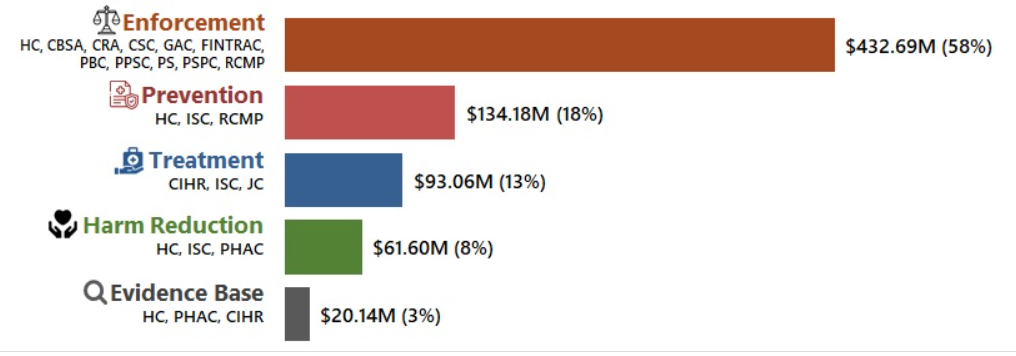
Williams' fourth lie is that the 'Alberta Model' began by striking the Recovery Expert Advisory Panel (aptly, REAP). This is revisionist and moves the goalposts. In fact, REAP only began in February 2023, four years after the government committed to its course of demolishing harm reduction services and pouring money into private addiction treatment. (The former Boyle Street Community Services building demolition began on April 8. Boyle Street housed the second supervised consumption site closed by the UCP government.) The makeup of the REAP panel is telling, however, with several financial beneficiaries of the government's chosen strategy.
Williams then falsely claims that Dr. Keith Humphreys is "the preeminent leading voice out of Stanford University across the entire world on the North American opioid crisis," citing Humphreys' Lancet-Stanford Commission on Opioids. This erases the deep well of expertise among people who use drugs surviving the crisis. The Commission's work leaned heavily on incorrect analysis of mortalities, asserting on its front page that "in response to the large pool of individuals who were addicted to prescription opioids, heroin markets expanded, increasing morbidity and mortality further."
Centres for Disease Control data and research ignored by the Stanford-Lancet Commission help us more accurately pinpoint cause-and-effect relationships among opioid prescribing, heroin and the rise of fentanyl.
In 2010, as marketing practices of Purdue and other pharma companies were justifiably under scrutiny, Oxycontin was reformulated to eliminate its potential for injection. Oxycontin users (overdose deaths in green, below) then switched en masse to unregulated heroin (overdose deaths in light blue, below), made from opium poppy. Demand for heroin outpaced supply, and the illegal market innovated with synthetic fentanyl made from chemical precursors that don't require poppy harvesting (overdose deaths shown in dark blue, below). The extreme potency of fentanyl over heroin and Oxycontin, comparable to the difference between moonshine and light beer, precipitated the poisoning crisis that continues to grow today.
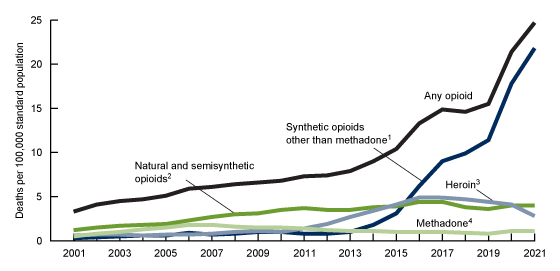
In short: the vast majority of people who otherwise would have accessed prescription opioids in the last decade, if not for this crackdown, should still be alive.
Back to the interview, Williams attempts to repeat the statement made April 2 by Premier Danielle Smith, in which she cherry-picked data to promote a narrative that alcohol, benzodiazepine, stimulant and pharmaceutical opioid deaths are on the decline. As CTV Edmonton painstakingly detailed, it ignores that 85-90% of drug poisoning deaths in Alberta involve fentanyl, which makes up 98% of opioid deaths. We still don't have December mortalities for Alberta, but it is likely that the province exceeded BC's death rate for the first time in 2023.

Thankfully, Brown firmly resists Williams' attempt to misdirect the conversation to this talking point, insisting that the government has had five years to produce the evidence on its strategy. He asks if Williams can produce simple statistics such as relapse (resumption of drug use) rates after people undergo so-called treatment. Williams responds that they are "working through making sure they have the appropriate privacy impact assessment."
Except they're not, because they already privatized the data:

Incredulous, Brown interrupts: "You don't have that number?"
Williams: "Well, we're trying to make sure we have all the different data sets together first–"
Brown: "It's been five years. Why don't you have that number?"
Williams: "Well, the truth is that the current framework for collecting information is done out of AHS... we need to be able to put the right data together... are we increasing people's quality of life for an addiction, what we call their personal recovery capital? And so as we pass this legislation it's going to enable us to use this data so that we can have evidence-driven policy." (Emphasis added.)
Brown: "Again, that's five years overdue. You've been spending hundreds of millions of dollars to date on this recovery program... You still don't have a measurement that you've rolled out that suggests that you're preventing deaths that wouldn't otherwise happen – I haven't heard that yet."

Williams: "We're looking to collect the data holistically..."
And the great lie constructed atop all the others: "Addiction either ends in pain, misery and death or it will end in treatment and recovery... So knowing that those are the two ends, if we don't build treatment spaces, and we continue to have more addiction happening in the province, in the country, there's no way to get them out of addiction short of them passing away..."
Williams then takes the opportunity to disparage harm reduction measures, such as safe supply (with BC's pilot projects showing reduction in deaths of up to 91% week by week), as "harm production." He notes that safe supply is the "very cause of the tragedies that we see." But the CDC data above, its related history and the current research on safe supply show the opposite.
Finally, a moment to appreciate the Health Sciences Association of Alberta, representing 27,000 health care workers including paramedics, speaking out against the government's direction on drug policy. In partnership with Friends of Medicare, the HSAA spoke outside of Recovery Capital Conference on April 4. Here is their statement, calling for up-to-date data on deaths and overdoses and for a wider scope of options for people who use drugs:
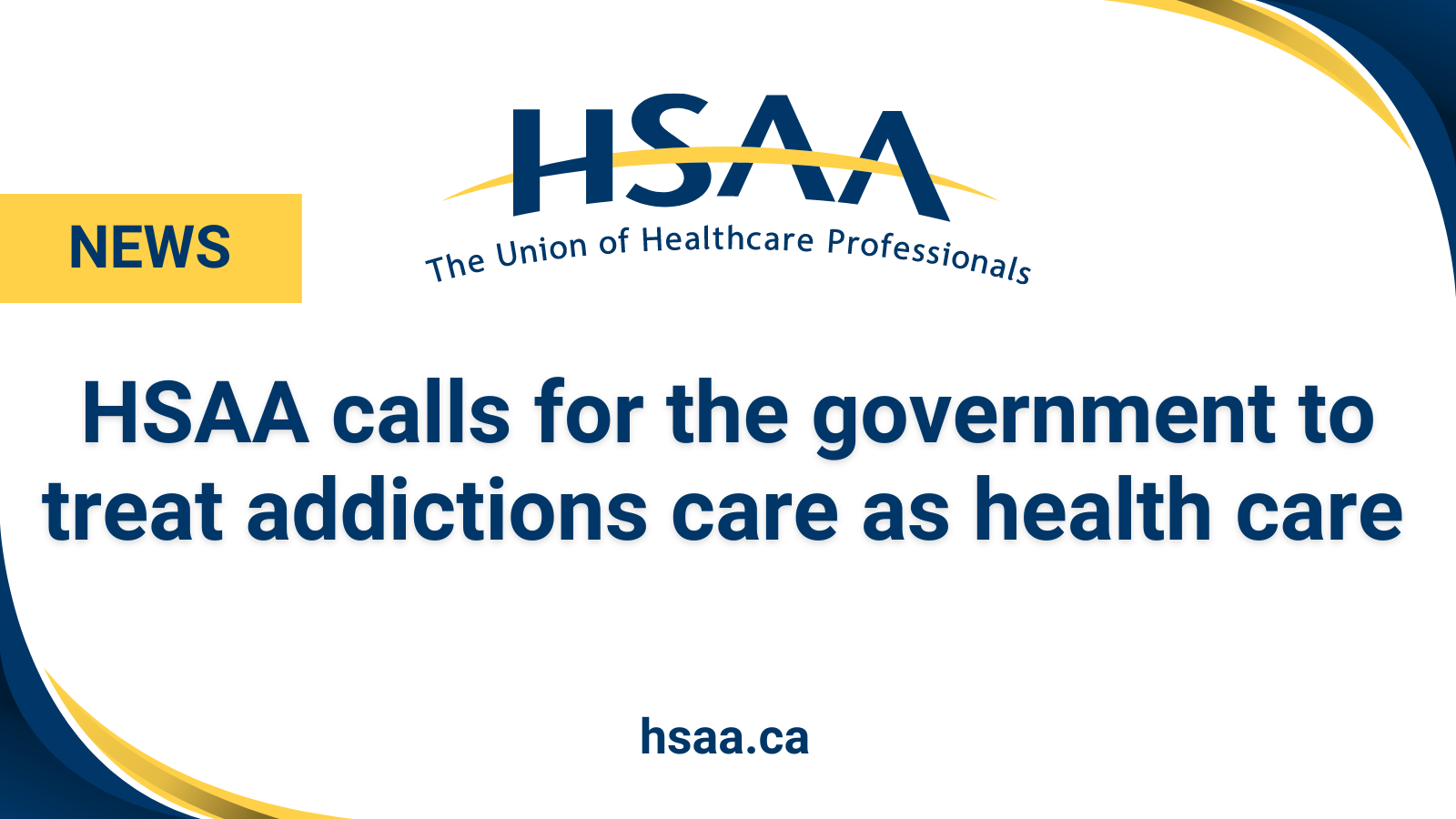
Drug Data Decoded provides analysis on topics concerning the war on drugs using news sources, publicly available data sets and freedom of information submissions, from which the author draws reasonable opinions. The author is not a journalist.






